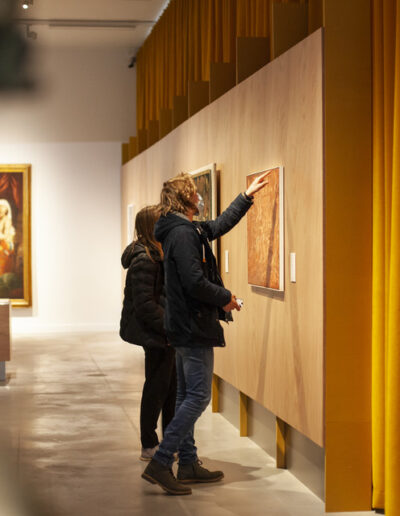Improving sustainability of scenography for temporary exhibitions Imbedding the principles of circular economy in the scenography of temporary exhibitions: an overview of the current situation in Flanders
Ilse Lindenbergh
Master Erfgoedstudies
2022 — 2023
onderzoek
promotoren
Hélène Verreyke
Bob Geldermans
Improving sustainability of scenography for temporary exhibitions Imbedding the principles of circular economy in the scenography of temporary exhibitions: an overview of the current situation in Flanders
This thesis research focuses on sustainable scenography of temporary exhibitions. The principles of circular economy serve as an inspiration to improve the exhibition process associated with three important actors: museums, designers, and contractors. Analysing tender documents send out by museums gave inside in the current perception of sustainability. A case study with Museum M resulted in an overview of potential impactful initiatives related to sustainable scenography.
There is a lot of willingness among museum professionals to implement more sustainable practices. There have been efforts to limit energy consumption, reduce carbon emissions and reuse materials and scenographic elements, such as modular construction systems. These efforts are often experimental and initiated bottom-up by exhibition designers and production teams.
These initiatives, to facilitate the reuse of temporary exhibition scenography, align with the principles of the circular economy. In this research, we have examined these first experiments and initiatives to assess the effect of implementing the principles of circular design in temporary exhibitions.
We have analysed the decision-making processes currently used to plan and create exhibitions by interviewing the three most influential stakeholders involved in the process: museum staff, designers, and contractors. Secondly, the tenders that museums put out were analysed to assess to what extent tenders include criteria related to sustainability and how the museums interpreted sustainability. Thirdly, the case-study of Museum M Leuven was studied more in detail. Our research has shown that tenders offer an excellent communication tool to align partners’ expectations and ambitions towards sustainable scenography design. The case study of Museum M made clear museums are willing to put time, money, and effort into sustainable choices and that there is a non-extensive list of possible initiatives to adapt and improve the sustainability of scenography.
Though each case is different and has different needs and solutions, there are general assumptions that show potential for implementation on a large scale.

